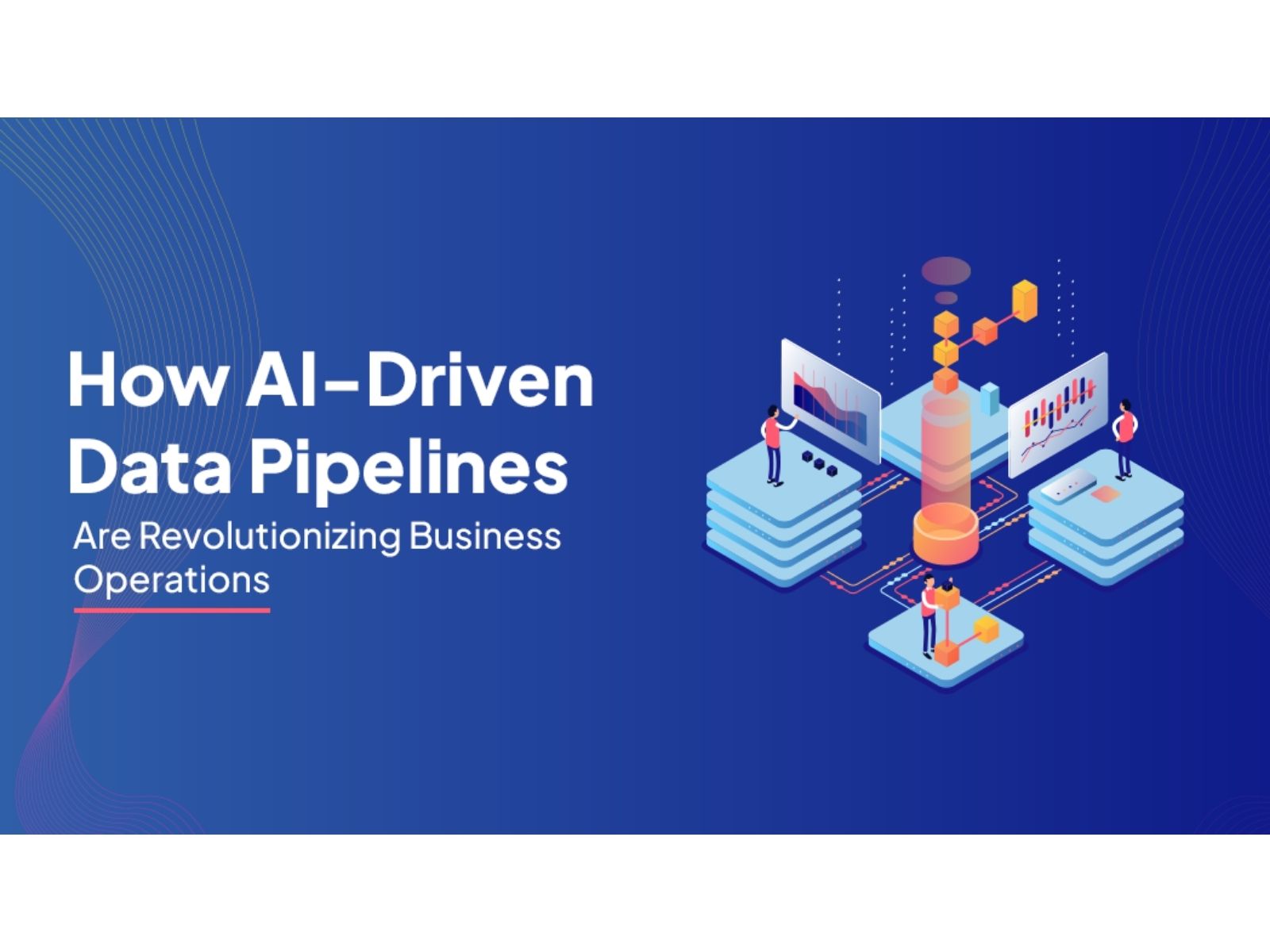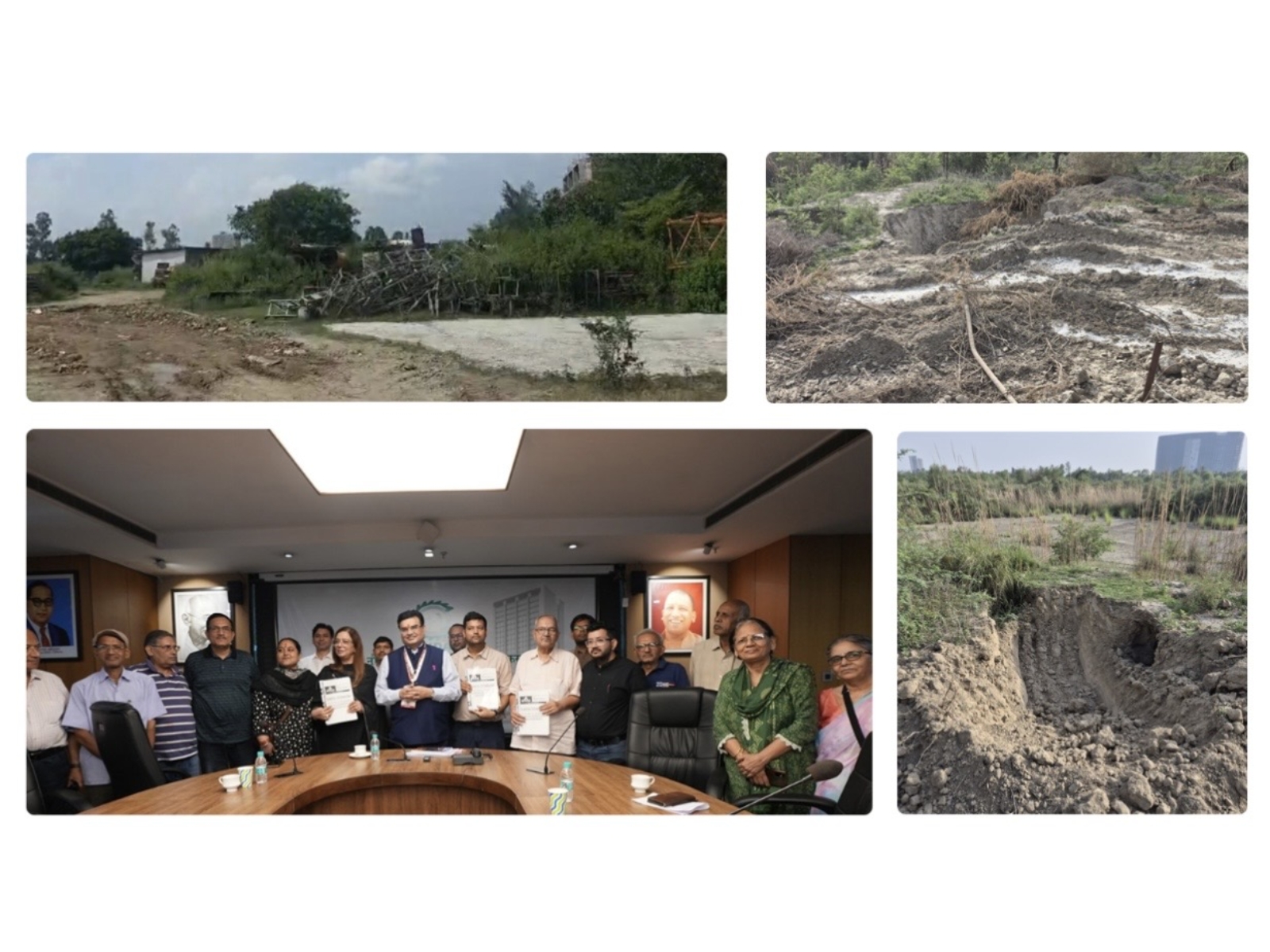
How AI-Driven Data Pipelines Are Revolutionizing Business Operations
Sep 29, 2025
PNN
New Delhi [India], September 29: Every action, interaction and decision in your business depends on having trustworthy and accurate data. When data flows smoothly from one place to another and stays consistent, you can be confident that your business and clients are well-protected. However, data is growing at an incredible rate, and the need to process it in real-time has become even more urgent. The business insights that help you make decisions rely on it, and your customers expect reliable and fast service.
To protect your company, reputation and future, it is crucial to focus on managing your data pipelines and the files you transfer during your data processes. It becomes even more important when organizations are tasked with meeting ESG (Environmental, Social and Governance) compliance standards, where accuracy and timelines of data are non-negotiable.
If your company is looking to use advanced analytics or generate sustainability reports aligned with frameworks like IRFS S1/S2 or GRI, setting up AI-driven data pipelines is a must. In traditional data pipelines, data follows a set path of being extracted, transformed and then loaded (ETL) into centralized storage like data warehouses. But AI has completely changed the game in the world of data.
"As data continues to grow exponentially, AI-powered pipelines are not just a luxury but a necessity," says Kaushik Mahadevan, CSO and Co-Founder of 4Seer Technologies. "At 4Seer, we are committed to helping businesses harness the power of AI to drive smarter decisions and faster insights, all while reducing manual effort and operational costs."
What is an AI Data Pipeline?
An AI data pipeline is a system that automatically moves data from its raw collection stage all the way through to training and deploying machine learning methods. It involves steps like gathering data, cleaning it, transforming it, preparing it for analysis and feeding it into AI models.
This pipeline ensures that AI processes are efficient, repeatable and accurate. Unlike traditional data pipelines, which mainly focus on extracting, transforming and loading (ETL) data, AI data pipelines add more complexity.
They also include steps for training models, deploying them and continuously updating them as new data comes in. For businesses that want to use AI at scale, whether it is real-time IoT monitoring in manufacturing, predictive analytics in retail or sustainability tracking in real estate, AI pipelines provide the foundation. They help you make quick decisions, automate complicated tasks and uncover valuable insights from data that might otherwise seem useless.
Why You Need to Automate Your Data Pipelines
A data pipeline is essentially the process that moves your data from one place to another. While the concept sounds simple, managing smooth and accurate data flow requires ongoing attention. As data grows rapidly and business workflows get more complicated, it becomes too much for traditional methods to handle manually.
Relying on different tools to move data can lead to delays and errors. For industries that require real-time data to provide a great customer experience (CX) or comply with ESG reporting standards, it is vital to process data instantly. Without automation, it is nearly impossible to scale data pipelines to meet these needs and stay ahead of the competition.
"Automation is more than just improving efficiency- it is a game-changer," says Kaushik Mahadevan, CSO and Co-Founder of 4Seer Technologies. "By automating your data pipelines, you get faster insights and a real competitive advantage. Our AI-powered solutions help businesses scale, keep up with the fast pace of real-time data and stay on top of compliance by turning data into a powerful asset for growth."
How are AI Pipelines Different from Traditional Data Pipelines?
Traditional data pipelines are designed to move data from one place to another while performing necessary transformations and ensuring data quality along the way. They are great for generating reports and performing basic analytics.
In contrast, AI data pipelines are built to handle the more complex demands of machine learning and AI tasks. They go beyond simple data processing to support advanced AI models. Here is a look at the main differences:
* Model training and development: Unlike traditional pipelines, AI pipelines support scalable model training, fine-tuning model parameters and deploying models into production.
* Continuous learning: AI pipelines include features for updating models over time. This helps ensure that models stay accurate and relevant as new data comes in.
* Advanced data transformation: AI pipelines include additional steps like feature engineering, which transforms raw data into a format that is ideal for machine learning models.
* Real-time data processing: While traditional pipelines often process data in batches, AI pipelines are designed for real-time data processing. This allows faster updates and decision-making.
Benefits of Automating Data Pipelines
Boost Efficiency and Productivity
Automation removes repetitive tasks, which frees up human resources to focus on more valuable work. By shifting staff away from manual data handling, you can drive innovation and improve service delivery.
For example, when employees focus on creative problem-solving instead of data entry, you can speed up project timelines and find better solutions for business challenges.
Improve Scalability and Performance
Automation helps manage large data volumes and fluctuating loads, which improves system performance and reduces costs. With the right tools, your business can handle peak data spikes without stress.
Simplify Workflow and Scheduling
Automated workflows make it easier to manage data tasks and schedule processes. This integration across systems removes silos and ensures the timely delivery of data, which eventually improves overall efficiency.
Enhance Reliability and Reduce Errors
Automation reduces the chances of human error. With built-in error detection and correction, automated pipelines improve data accuracy. It ensures reliable reports and compliance.
Provide Better Visibility and Monitoring
Automated pipelines offer real-time tracking, which gives you clear insights into data flows and system performance. This helps you spot and fix issues before they escalate.
Strengthen Fault Tolerance with Built-in Recovery
Automation tools include fault detection and recovery plans to minimize downtime and data loss. Alerts and notifications help you respond quickly to issues, which ensures your data remains secure.
By automating data pipelines, businesses can improve efficiency, accuracy, scalability and service reliability, all while reducing costs and minimizing errors.
How AI Pipelines Work with Your Existing Business Systems
AI pipelines are built to seamlessly integrate with your current business systems, which helps data flow smoothly and use AI insights without disrupting operations. Here is how they work:
Pre-built Connectors and APIs
Many AI pipelines offer ready-to-use connectors and APIs for systems like CRM, ERP and cloud data storage. These connectors let you easily pull data from different platforms without needing custom code.
Data Integration Across Systems
AI pipelines gather data from various sources like databases, IoT devices and social media, then process it for use in analytics or machine learning models. For example, CRM data can be used for personalized marketing campaigns.
Middleware and Cloud Integration
AI pipelines support cloud platforms (e.g., AWS, Google Cloud) and on-premises systems. Middleware tools help ensure smooth data communication and synchronization between different systems.
Event-driven Architecture
AI pipelines use event-driven models to trigger real-time processing, which ensures timely insights in systems like customer service or supply chain management.
Customizable Workflows
AI pipelines often offer drag-and-drop interfaces to let you design workflows that fit your needs without overhauling your existing systems.
Security and Access Control
AI pipelines use encryption and role-based access control to ensure secure handling of sensitive data across your systems.
Final Thoughts
AI data pipelines are transforming how businesses manage and utilize their data. By automating processes, improving accuracy and enabling real-time decision-making, they offer significant benefits over traditional methods.
When aligned with ESG compliance and sustainability goals, they go beyond operational efficiency and become tools for accountability and growth. Integrating AI into your data management platform not only enhances efficiency and scalability but also empowers your organization to use data for smarter, more informed business decisions.
Integrating AI into your data pipeline not only enhances efficiency and scalability but also empowers your organization to use data for smarter, more sustainable business decisions.
(ADVERTORIAL DISCLAIMER: The above press release has been provided by PNN. ANI will not be responsible in any way for the content of the same)








